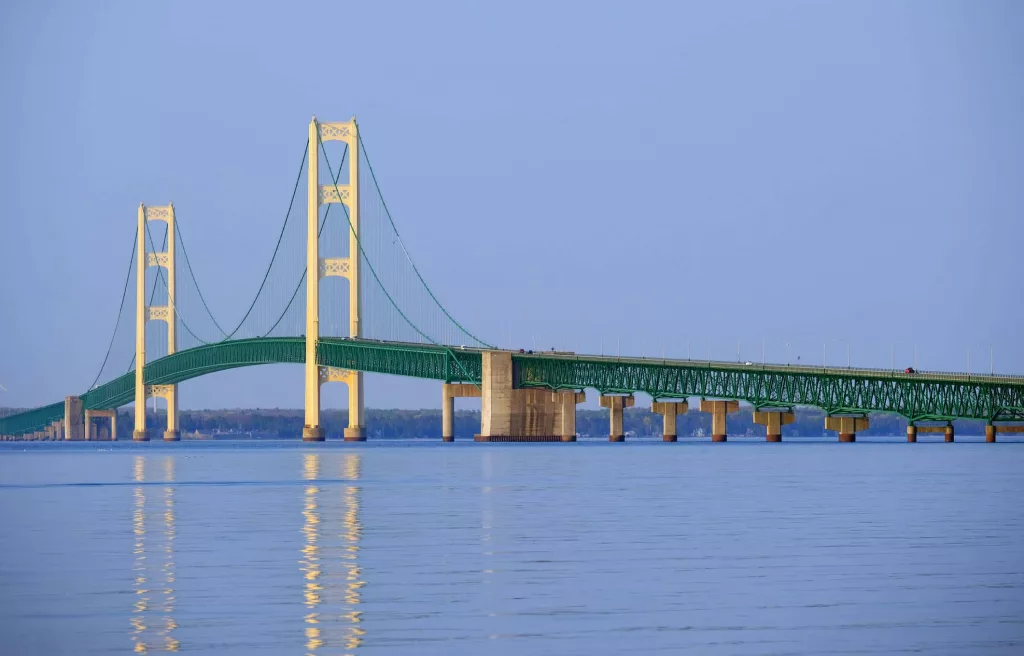Even though the Mackinac Bridge is more than 300 miles away, the potential impact on the environment from a ruptured pipeline under that bridge has caused a Southwest Michigan environmental group to take a hard line stand calling for the shutdown of the controversial Enbridge Line 5 pipeline under the Straits of Mackinac.
After reviewing the likely cost to Michigan consumers if the state were to shut down the line and the potential impact any spill might have, the Two Rivers Coalition has adopted a resolution calling for the immediate shutdown of Line 5 and an end to the transportation of the 23 million gallons per day of crude oil flowing through it.
According to a study recently released by the State of Michigan, 2 cents a gallon is the predicted rise in the price of gasoline for Michiganders if the 64-year old pipeline is shut down because of fears that a pipeline rupture might destroy the environment and economy of Northern Michigan.
Kevin Haight is President of the Two Rivers Coalition. He explained “why a local environmental group is taking a stand on a regional issue.” Haight says, “While the mission of TRC is the health of the river watersheds here in Southwest Michigan, we can no longer ignore the fact that every one of us is also part of the Lake Michigan watershed, and in turn, the Great Lakes Basin watershed. It is just not enough to only care about the quality of the water until it flows out into Lake Michigan.”
The Two Rivers Coalition has been concerned about the safety of Line 5 ever since another pipeline owned by Enbridge ruptured and spilled a million gallons of tar sands oil into the Kalamazoo River back in 2010.
Members of the group attended a public hearing in Petoskey earlier in the summer and were surprised about what they learned. Although the 1953 easement agreement with the State of Michigan required that the twin 20 inch pipelines have support structures anchored in the lake bottom every 75 feet, documents recently uncovered show that at least 16 sections of the pipeline do not meet that safety requirement and have unsupported spans greater than 140 feet. In fact, one pipeline span is unsupported for 286 feet and thus is exposed to the force of the surging currents under the Straits.
The TRC’s position is that even a small risk of a pipeline rupture and oil spill is not a risk worth taking. A study by U-M of the consequences of a massive spill estimated that up to 700 miles of shoreline could be affected. Besides the obvious damage to the environment and economy, Haight mentioned another intangible loss. He says, “Think about the tens of millions of dollars our legislature has spent promoting the ‘Pure Michigan’ brand; the enormous value of that brand would evaporate in the first 30 seconds of video footage on the evening news showing Mackinac Island ferries stuck in a sea of crude oil.”
The decision by TRC to join the overwhelming chorus of other environmental groups and municipalities around Michigan was “ultimately an easy one to make, when the risk of an environmental catastrophe, no matter how slight, was weighed against the miniscule cost to Michigan consumers of shutting the pipeline down.”
The group contends that paying 2 cents more per gallon of gas or 10 cents more for LP gas in the U.P. makes far more sense than spending billions of dollars on a clean-up effort that likely would never be completely successful.
As Haight puts it, “It is crucial to take a long term view when thinking about protecting the water quality of the Great Lakes.” He concludes, “We are stewards of 20-percent of the entire world’s fresh water supply and that is a public trust that we cannot ignore solely to allow Enbridge to squeeze even more profits out of this aging pipeline.”






